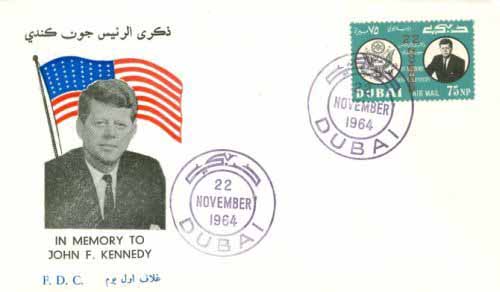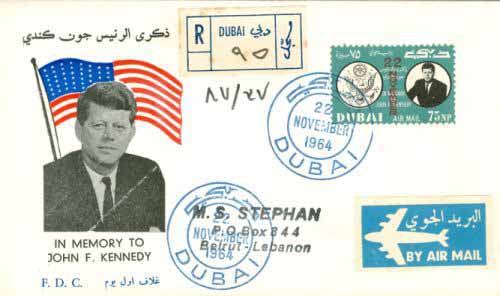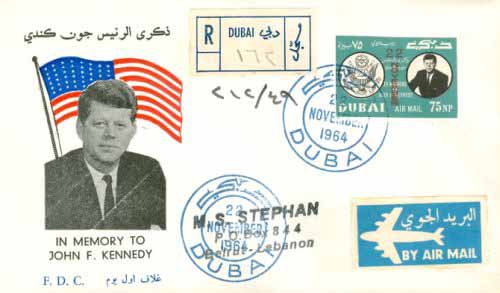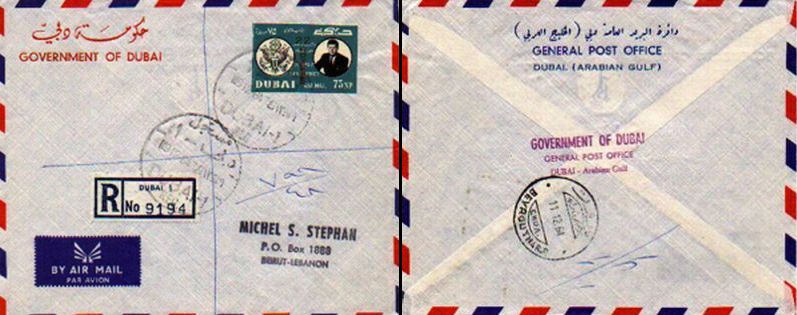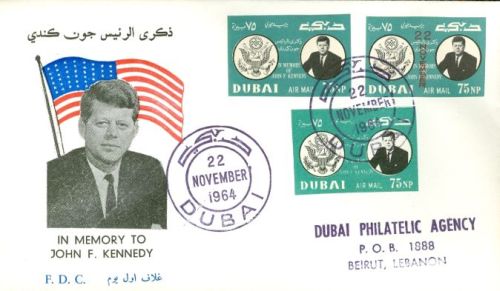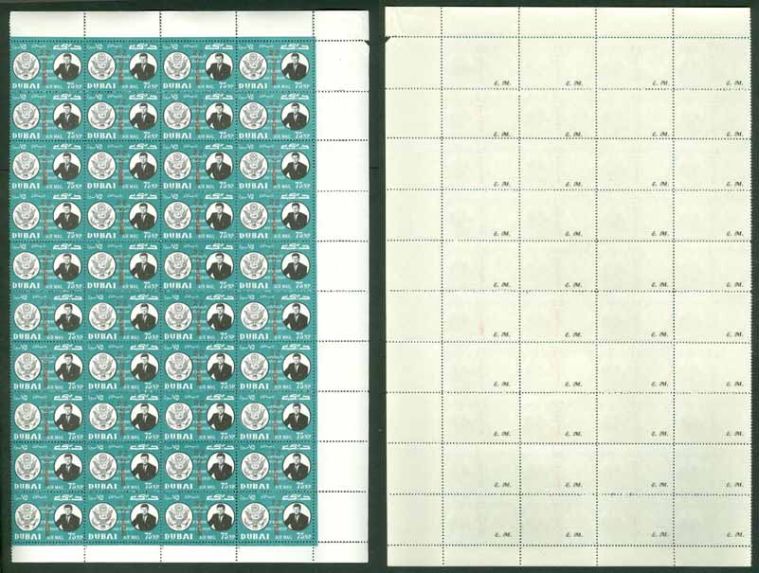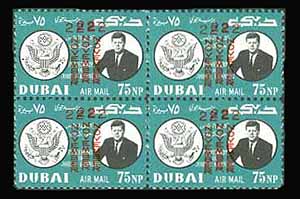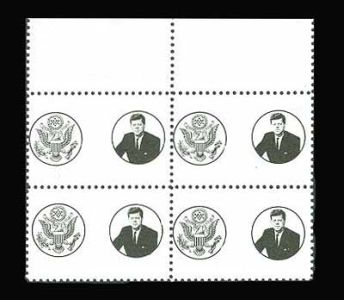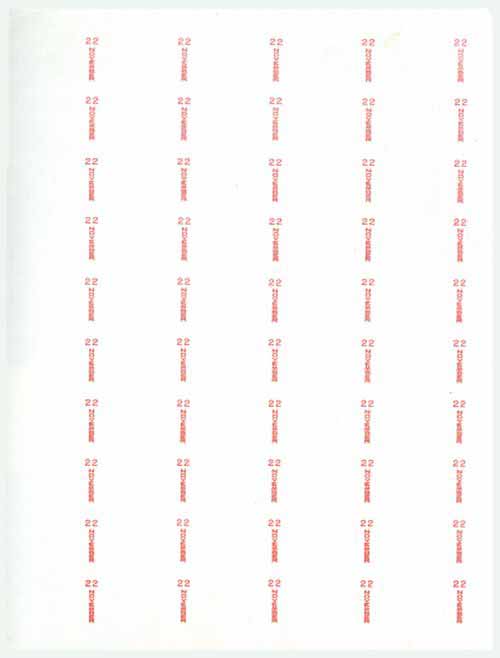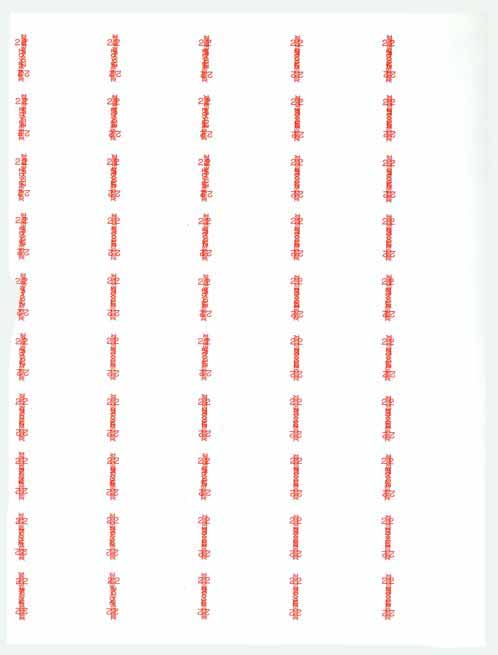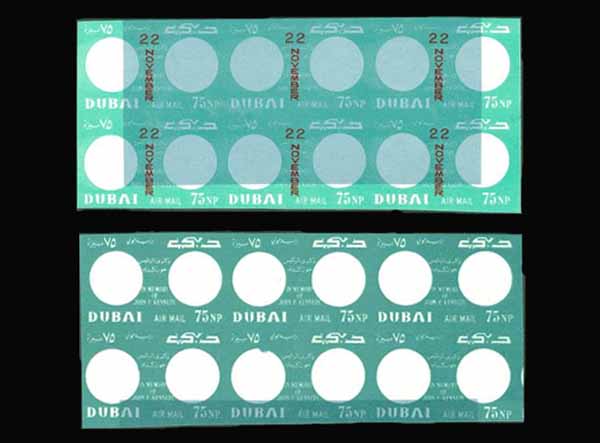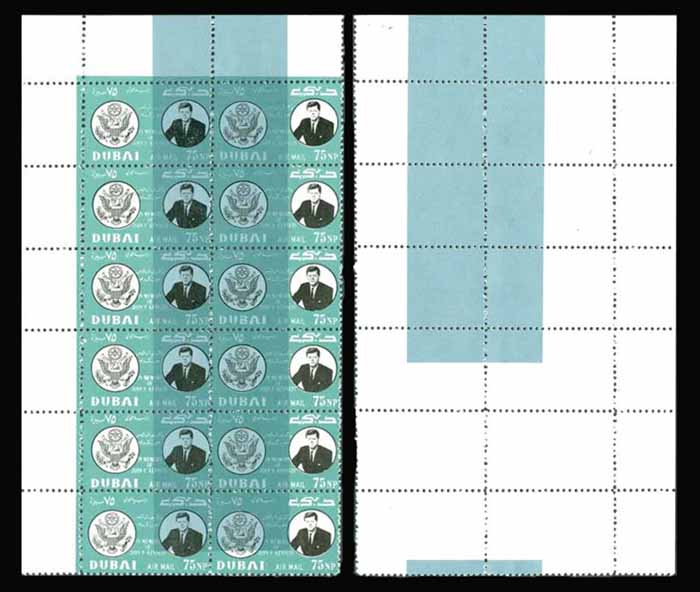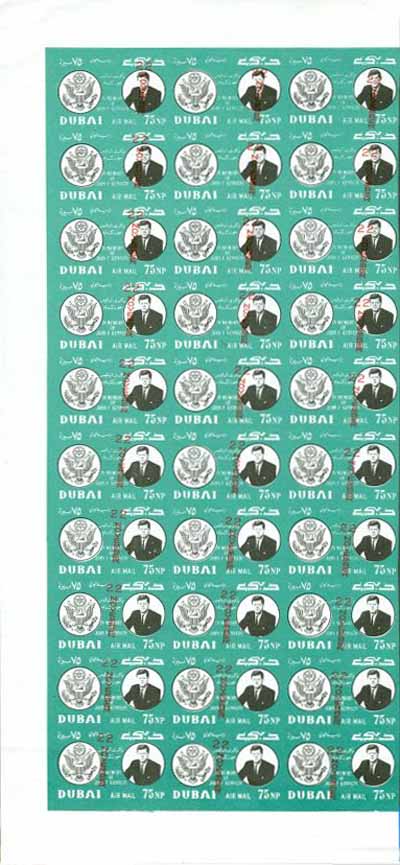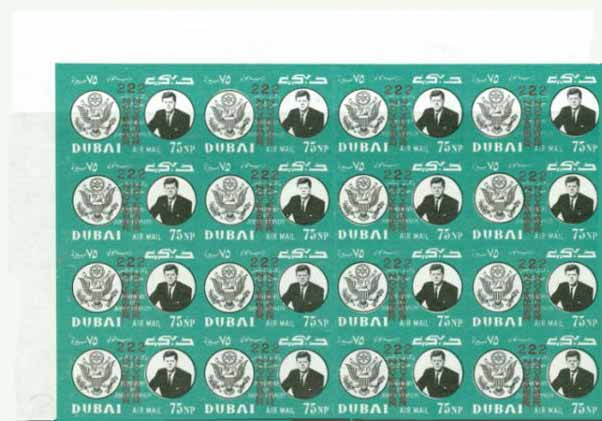

This issue was the most difficult of all the Dubai issues to catalog due to the many varieties. It soon became apparent that there were two printings of this stamp. Not so apparent at first was the existence of a third printing.
In his early correspondence Mr. Stephan stated the following quantities existed: Perf. 12 ½ - 10,000 Perf. 10 ½ - 2,000 Imperf. - 2,000
It is surprising that none of the catalogs mention the perf. 10 1/2 variety, since the "official" quantity Stephan gave of the stamps is the same as the imperf. (2,000), which they do list.
There is no question that these figures are incorrect in view of the evidence.
The reality of the situation was that at this point the catalog makers were rebelling against the number of stamps, miniature sheets and perf. varieties, and it was best not to mention, or at least not push for their inclusion. Mr. Mosden had stated that he had to fight to get some issues listed. The listing of a stamp meant collectors would want it for their collections, a space for it would be shown in commercially printed albums, and the fact that it was in a catalog gave it some legitimacy. Mr. Mosden stated that if he could get items listed it meant increased sales of those stamps. This is the period when Kennedy was a very popular subject for topical collectors. Realizing that, many countries issued “Kennedy” stamps.
When asked about the possibility of there being a reprinting of the stamp, Mr. Mosden stated that there were two printings but did not mention the third. It evidently went unnoticed by him as he purchased the second and third printing about the same time and the differences are easily overlooked.
He stated that the first printing was done in sheets of 100 stamps with black lines in the margins. These were perforation guidelines. The second printing was done in sheets of 50, without the lines in the margins.
The second printing was imperforate and allegedly purchased in it's entirety by Mr. Mosden and his uncle Mr. Rahman Darwish. They purchased all of this issue, the overprinted UNO 19th Anniversary issue and the Space Achievements issue at the same time. They paid in cash and had to pay higher than face value for the Kennedy stamps in order to secure the entire imperforate stock. As a result of controlling the issue, he was able to command a high price from dealers and he was successful in getting the European catalogs to list the imperf. variety. One must remember that Mr. Mosden was the American agent for the Dubai Philatelic Agency. He dealt in wholesale quantities of the stamps and sold to dealers.
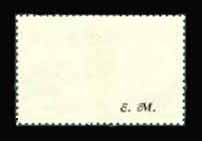
They purchased approximately 15,000 imperforates of the Kennedy stamps from Mr. Stephan and 5,000 imperforate stamps from the printer. It appears that part of those purchased from Mr. Stephan consisted of imperforated sheets from the first printing as well. Later, Mr. Mosden needed some perforated stamps so he had some sheets (quantity unknown) perforated 12 1/2 in New York. This meant he did not have to buy the perforated stamps from Mr. Stephan who had kept that variety. To distinguish these from the original stamps with the same perforation, he had his initials "E M" printed on the back of each stamp, in black.
It appears that originally the stamp was to be only issued with perf. 12 ½, as that is what is found on all the First Day Covers.
While discussing the reprints he chuckled and said that the poor quality of the second printing caused some dealers to think they were forgeries. He said when he was able to prove they were authorized by the Agent, he made a great deal of money from them. He also stated that there were many varieties such as misplaced centers, missing overprints, double and triple overprints and different shades created during the reprinting process.
We now have three printings of the same stamp, which are fairly easy to differentiate from each other, stamps perforated 12 ½ in Beirut and later, stamps perforated 12 ½ in New York, which are distinguished by the letters “E M” on the reverse. When Mr. Mosden purchased the entire stock of the stamps, he got imperforate sheets of all three printings. It is difficult to know which printings he had perforated in New York, since he had all three. Only time will tell as people become aware of the differences in the printings and begin to compare stamps.
We also have stamps perforated 10 ½ n Beirut. There is evidence that stamps from the first two printings were used. It is unlikely that the third printing was used, as it was purchased from the printer. The obvious question that the situation warrants is whether the printer was also selling Dubai stamps that he had printed. For more information on the subject refer to the pages for the Second Definitive issue of 10 May, 1964.
Most people erroneously consider the “22 NOVEMBER” printed on the stamps, to be an overprint. Both Mr. Stephan and Mr. Mosden claimed it was part of the design and not an overprint. It’s understandable that people would assume such, since the design is the same as the first Dubai set of three stamps for Kennedy. Only the color was changed and the date added.
Since few collectors are interested in possessing full sheets or margin multiples of this issue, it would appear that is would not be possible to determine from which printing a stamp came, without the margins. Actually, it is relatively simple to distinguish the first printing from the second and third. With a little experience the other two can also be determined.
FIRST PRINTING
1) Kennedy’s face is a darker gray, consisting of many dots.
2) The width of the lines making the circles around the portrait and the eagle are thick.
3) The distance between Kennedy’s hair and the top of the circle is very narrow.
4) There are black guidelines in the margins
5) The sheet size is 100 stamps (10 x 10)
It appears that the green color is fairly consistent and the lettering is clear. These exist with the two perforation varieties and imperforate. The also exist without the red printing. First Day Covers only exist for this printing and are perforated 12 1/2.
There are shades of the green and the lettering is often blurred, or not clear. These exist in both perforations and imperforate. They also exist without the red printing. This printing was used to make most of the printing varieties and “errors”.
These exist imperforate and perforated 10 ½ and without the red printing. This is most likely the printing purchased from the printer as they are not as plentiful as the second printing. It is assumed that they were printed in sheets of 100 as the strip illustrated below is from this printing and it seems unlikely that the printer would print long, narrow strips of stamps.


